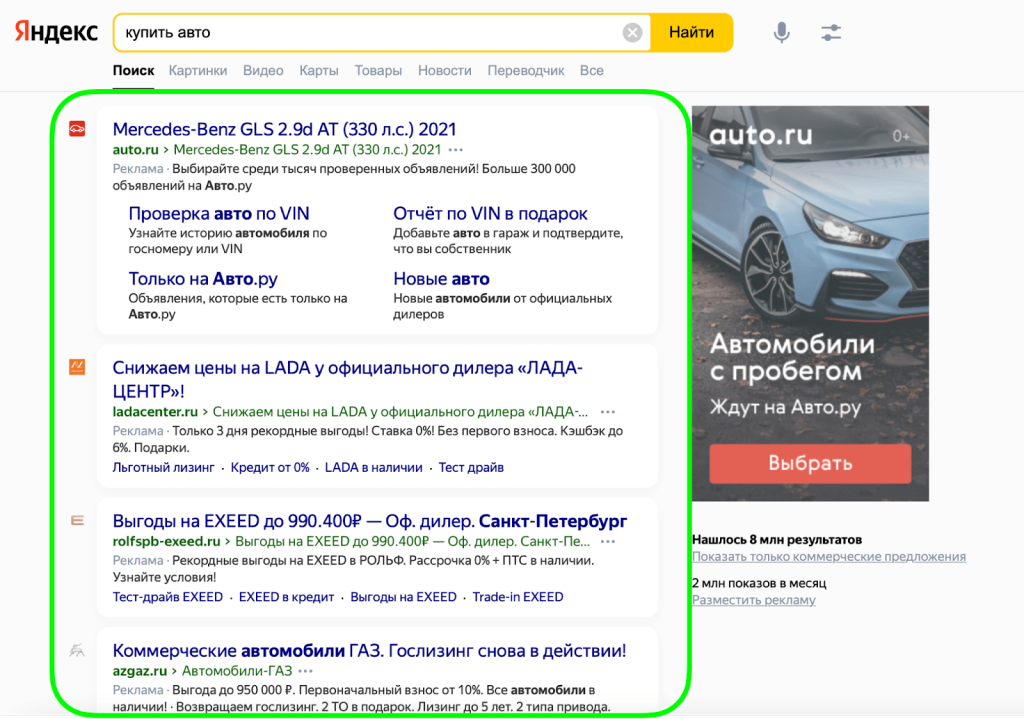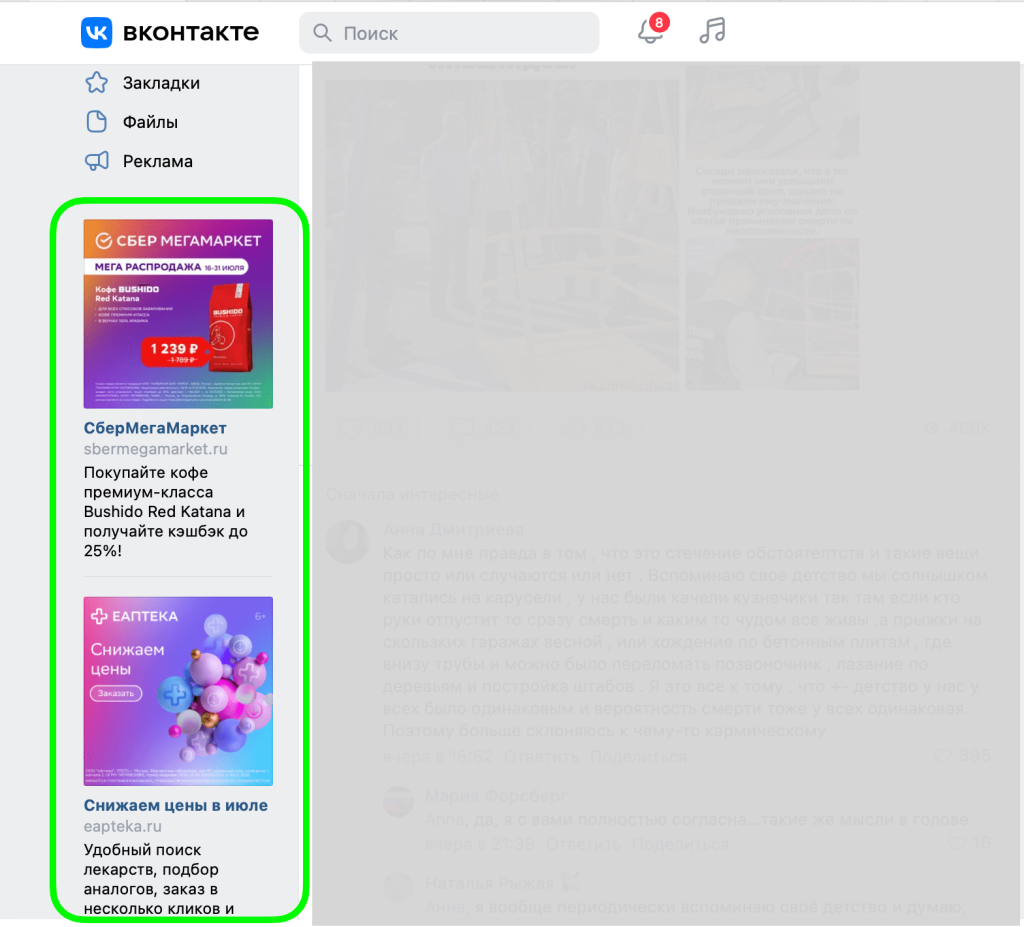Personalized Advertising and Communication Personalization
Today’s Opportunities — Tomorrow’s Prospects
About eight years ago, when Gmail quite reasonably reminded you that you had a flight in a week, because the trip was saved in your calendar or your tickets were in the mail, you still felt slightly uncomfortable, as if someone had invaded your privacy. Now it’s no surprise that an ad addresses you by name, or something that’s been said when you’re online on Instagram can quickly turn into an ad.
We live in an era of personalised communication, and this trend has been observed in advertising communication, as a sales tool, for more than a year.
How advertising became personalised
The amount of data that we put on the Internet or leave when we’re surfing websites in search of the information or product we need is huge, and all this data is systematised and collected in a single user profile, making it possible to get to know each user better. Each new request, action (or inaction), browsing history, interaction with an application, or piece of demographic and geolocation data forms the basis of future personalisation. So now 90% of the advertising that you see, (or more precisely, that you are shown) is customised based on your interests and behaviour on the Internet, which makes the advertised products/services, if not entirely relevant at a given moment, then potentially quite interesting in general. This is very convenient. Another plus, besides increasing the relevance of messages, is the reduction in the ad importunity degree. We can note that the reason for this phenomenon is the same — the collection and processing of information about your buying behaviour. Previously, when you bought something online you might see ads for similar brands, products, or services for another month. Now we are less and less likely to fall into an endless retargeting cycle, because making a purchase is also taken into account, which means that showing you analogues simply doesn’t make sense. We cannot say that personalisation algorithms work perfectly: there is a human factor — these are the people who still determine the target audience for their business, as well as create the message and the visual element for it. Although even neural networks and AI can now create ad messages, but this trend is for another article.
How users feel about personalised advertising
The advantages of personalised advertising for advertisers, brands, retailers and other business categories are clear: this really is a shortcut to a sale or a needed target action. But how do users feel when they receive these ad messages?
This is a difficult but interesting question, because the attitude towards personalised advertising depends on several factors at once:
- where it was shown or who showed it;
- whether it gives you any personal or new extra value;
- what you think about the use of your data.
Where It Was Shown/Who Showed It
Users are more loyal to messages on resources that they often visit or are registered on. They are also more receptive to a sender whom they have communicated with for a long time, whether the sender is promoting itself and its products/services or offering something else. For example, if you have been buying cosmetics and perfumes in the same store for years, you are likely to be comfortable (and maybe even be interested in) personalised advertising from the store, regardless of whether it focuses on products of the same store or with cross-selling communication of another brand which was identified by the system as interesting to you again based on your buying behaviour.
Extra Value
Users are more likely to interact with a message that has added value for them: for example, a personal discount offer from a favourite brand, a resource, birthday discounts, loyalty cards, bonuses, gifts from partners, and so on.
Personal data
As VCIOM reports:
- 37% of Russians do not know what their personal data can be used for, or how it can be used
- 62% are to some degree aware of the purposes of using their data (72-76% among young people; 46-62% among older generations)
- 15% of those in the know say they know exactly how their data can be used
- 47% have heard something about it, but don’t remember the details
- Among them, 53-56% answered that most often it was government organisations that used the obtained data about citizens to confirm their identity
When users provide data:
- 49% of Russians surveyed provided data to receive banking services
- 46% of Russians gave permission to determine their geolocation
- 45% provided data when registering on the websites of government institutions
- 38% ordered home delivery
- 38% shared information on social media
A large percentage of active Internet users are certain that their data can be used for things other than marketing purposes. But despite this, they are still ready to provide data — for example, to a trusted resource or to join a loyalty program.
The ethical side of the issue is ambiguous for users: some people reasonably consider personalised advertising unethical, whereas others on the contrary considers it quite useful (subject to compliance with Federal Law 152).
Targeted and Contextual Advertising
These are the two most famous types of personalised advertising.
Contextual advertising (CA) takes into account search history and page content. Such advertising is shown to the user when the user develops interest in the product or service.
- CA can be textual and text- and graphic-based (i.e. text + visual part — an image, animation, or video).
- CA can be search-based and thematic. Search-based advertising messages appear in the search results when the user enters certain words in the search box. Thematic messages can be shown on sites that are part of the search engine partner network. On these resources, the user will also see a CA corresponding to their search history and the content of the sites they’ve visited.
- CA also uses retargeting tools — partner sites can remind users of viewed but not purchased products, an abandoned shopping cart, etc.
- CA is placed in Yandex.Direct and Google Adwords (earlier).
Pros of contextual advertising:
- large coverage,
- exact hit in target audience,
- relevance to users — less negative in relation to the brand/product/service/advertiser.
Cons of contextual advertising:
- the wrong choice of keywords or inconsistency of the ad with the content can lead to poor conversion;
- automatic or manual click fraud can also prevent the ad from reaching the target audience, and the budget will be spent anyway;
- many users use software to hide advertisements.
An example of contextual advertising: 
Targeted advertising (TA) focuses on habits, intentions and shopping experience. Ads are seen by users grouped into certain segments based on publicly available information from user profiles.
- TA is almost always text- and graphic-based (that is, text + visual part — an image, animation, or video)
- TA can be customised by:
- social parameters (gender, age, income level, marital status, etc.);
- geo (country, city, district, and even a street or area within a limited radius);
- time (the selection of the time of day, days of the week);
- behaviour on the Internet;
- interests on the Internet;
- login devices (operating systems, browsers, PC/mobile devices);
- look-alike (segments similar in characteristics to your target segment);
- by goals (conversion, leads, involved actions, etc.).
Pros of TA:
- setting and reaching the target audience,
- personalisation of ads,
- fast ad optimisation.
Cons of TA:
- needs precise setting,
- it’s important to take into account the specifics of ad moderation in a particular network,
- burnout and low motivation of the audience.
How to set up and run TA:
- creating a portrait of the target audience,
- developing creatives (trigger text + a visual),
- adjusting characteristics (demographic profile, geo, interests, devices, etc.),
- determining the payment format: for impressions/clicks,
- creating a campaign (after setting all the parameters it needs one click),
- moderation.
An example of targeted advertising: 
Far/Near Future
Obviously, personalised communication in advertising and in general is an indispensable element of an effective communication strategy. Marketing is becoming more and more customised every day, which means that on the one hand, we must work to reduce the level of the audience’s fears regarding PC. On the other, we need to move towards the individualisation of advertising using neural networks and AI, which will be able to analyse client preferences and forecast client’s intentions, or maybe towards individualisation through smart devices such as AR goggles or IOT.
Personalisation of Communication
This topic is worthy of a separate article, but it would be wrong to ignore it in a discussion of personalised advertising.
Besides PC, there are other ways to communicate with potential customers that are based on user data and work to increase sales and loyalty, as well as solve other tasks directly on the resource where you are going to buy products or order services. Yes, we are talking about on-site personalisation, which most users take for granted as an attribute of an effectively performing website. On-site personalisation is also based on data about users and their buying behaviour; it makes it possible to personalise the user’s path on the site, and convey personal messages and offers to the user. This helps to lead the user to the desired action. Thanks to on-site personalisation, the sites you shop on greet you by name, inform you about special offers relating your favourite products/categories/brands/services, help you with navigation, tell you about relevant promotions, and much more. Personalised communication on a website is not advertising in the classic sense, but it is designed to solve the same problems and even more.
You can learn more about the personalisation of communication on our website
You can start working on onsite personalisation with our team today — fill out the form on the flocktory.com website or contact us at sales@flocktory.com)



